A lot of posts recently, I know – I’m on a mission. Don’t expect four a week all the time, though. 🙂
We amigurumi makers have a big advantage when it comes to hiding our yarn tails: a side of the crochet that will never show. We never have to have that little fuzzy cut yarn end in our stitches, waiting to peek out. Here’s how I hide it. (The red yarn was joined at the last stitch purely for visibility; it reality it would be orange like the rest.)
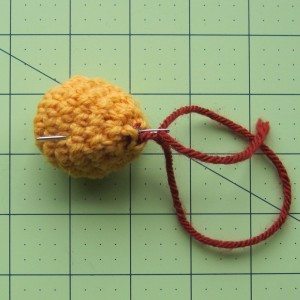
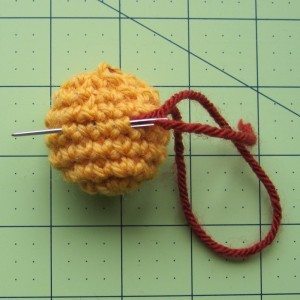
Above: After stitching whatever drawstring method you prefer for closing the final hole in your piece, put the needle down through the opening and out the side of the piece to tighten the drawstring. This prevents your final round from being pulled outward to form a nub. Run the needle through some stitches around the side and back out again. Don’t tighten too much or the piece will compress! [1]
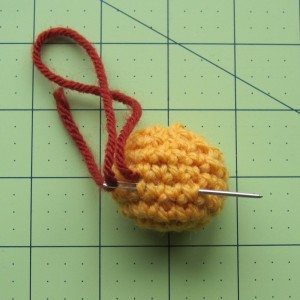
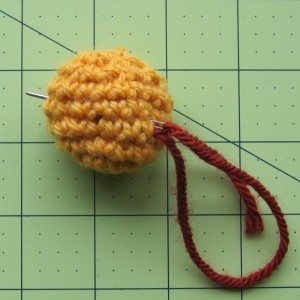
Above: Make a U-turn with the yarn, stitching under the intervening strands enough to make sure the base of the U isn’t lying on top of your crochet stitching. Run it through another line of stitches. Finally, put it back into the piece at the spot where it emerges from the stitches, and run it entirely inside and out again a ways away. Clip the yarn close to the stitching and massage the piece if necessary to get the tail to disappear inside.
After the cut: using this technique in embroidering and fine-tuning pieces.
You can use this technique in reverse for the beginning of embroidery floss or yarn: supposing the part you want to embroider is the front, insert your needle on one side and out the other (or out the back if the piece is large). Pull only until the end disappears inside the piece. Run the yarn or floss through some stitches, and then back into the inside of the piece and out where you want to embroider. Secure the final end of the yarn or floss in the way described above.
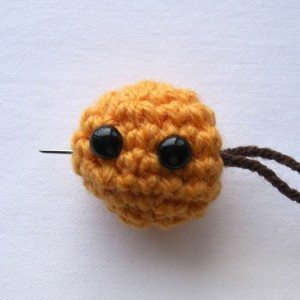
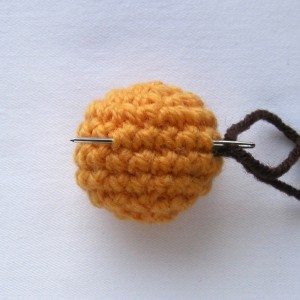
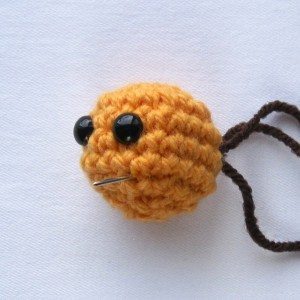
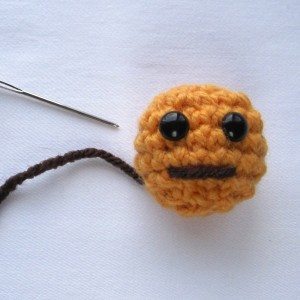
This has the added advantage that you can hide your thread securing in a less noticeable place. Strongly contrasting yarn or floss is likely to show through the stitches no matter how neatly you work, so this way you can put it in the shadow of another part of the ami, or simply on the back side.
[1] Compression of stitches can be used to your advantage, of course, if you have a narrow region that you’d like to emphasize, as in the bee below. I ran the yellow yarn though the yellow stitches of the neck and tightened. The effect is subtle – click the photos to enlarge them – but noticeable.
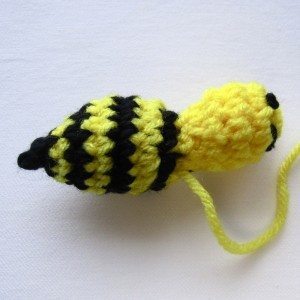
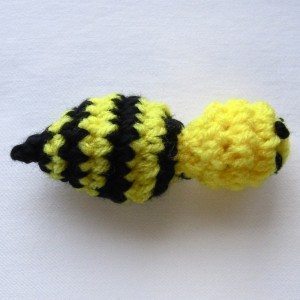
I learned this somewhere along the way for hand sewing. With my hand-stitched potholders, after finishing a length of embroidery floss and knotting, run the needle between the layers a ways, pull slightly taut, and snip. When you release, the thread will disappear into the layers, never to be seen again (one hopes!).
Hehe! I like that face you made:)
Thank you. 😐